When you look into your woods, you see a lot of trees. But do you know what kinds of trees you are seeing? Maybe you’ve enjoyed the woods as a whole but haven’t thought much about the types of trees it contains.
Trees are unique and fascinating, and knowing what kinds you have will help you understand something of the value hidden in your woods.
In this post, we will cover ten tree species we commonly encounter. Wondering what makes them special—and what value they have? Keep reading and find out!
1. Black Walnut
Characteristics
Black walnut (Juglans nigra) is a magnificent hardwood species native to North America and greatly prized for its colorful lumber. It often grows in wetter areas and in groupings or groves. Compound leaves make walnut trees easy to identify—as do the many nuts they drop!
Timber Value and Use
As lumber, black walnut holds exceptional value and is often considered “black gold.” Furniture makers prize the deeply colored heartwood, and woodturners are always looking for smaller pieces to make bowls. At Stoltzfus, we typically do not consider a property with fewer than 50 saleable trees, but if you have 20 good walnut trees, we’ll be open to coming by!
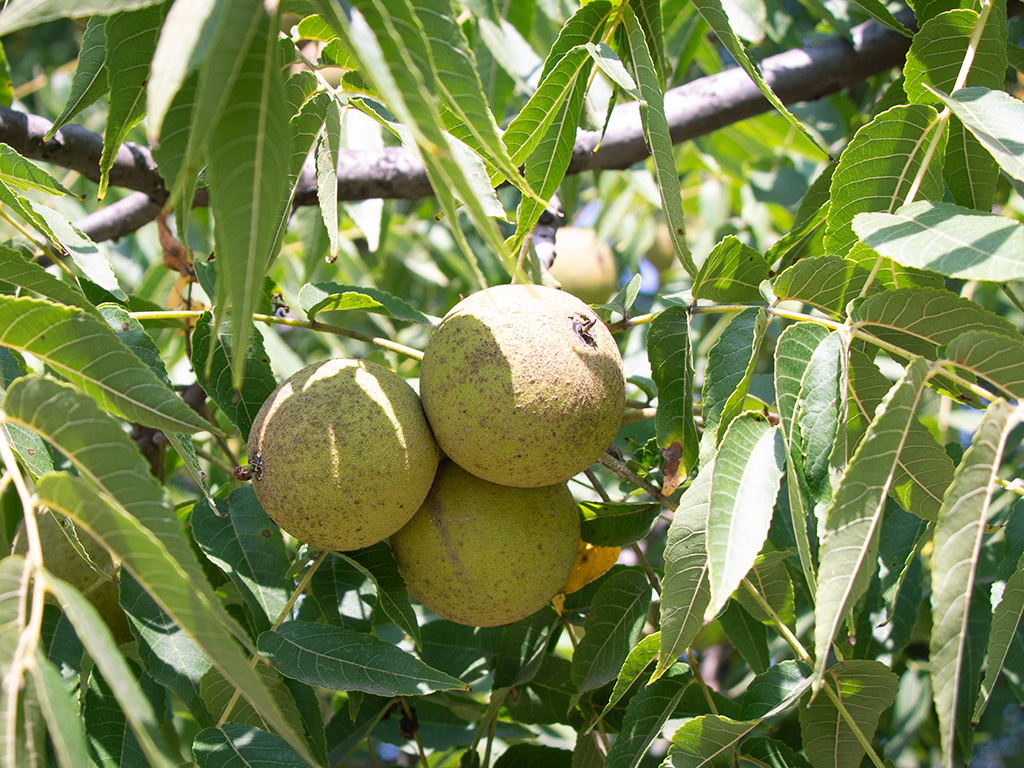
2. White Oak
Characteristics
White oak (Quercus alba) is an outstanding species, widespread across eastern North America. It’s also the state tree of Maryland. The leaves of white oaks are lobed, usually have rounded edges, and bear five to nine lobes. Given time, these trees can grow extremely wide and thick, though, in the woods, they grow much taller than they do wide.
Like red oaks, white oaks are a family, and this family includes trees like chestnut oaks and bur oaks. As with the red oaks, the true white oaks bring the highest prices. Of all the regional oaks, they tend to be the healthiest and to live the longest.
Timber Value and Use
The price for white oak is among the highest these days. As red oak has fallen in home trends, white oak has risen. It is popular in flooring and cabinets. One unexpected thing keeping prices high is the shrinking supply of white oak in Kentucky’s bourbon-making country. Their regional deficiency is helping our area since Mid-Atlantic lumber is shipped to bourbon country for barrel making.
Unlike some trees like poplar and red maple, white oaks do not regenerate quickly after harvest. This slow, steady growth also adds to their value.
Of all the oaks, white oaks have the sweetest acorns, loved by deer and treasured by those who hunt the deer. As a result, we commonly meet landowners willing to cut any tree except their white oaks.
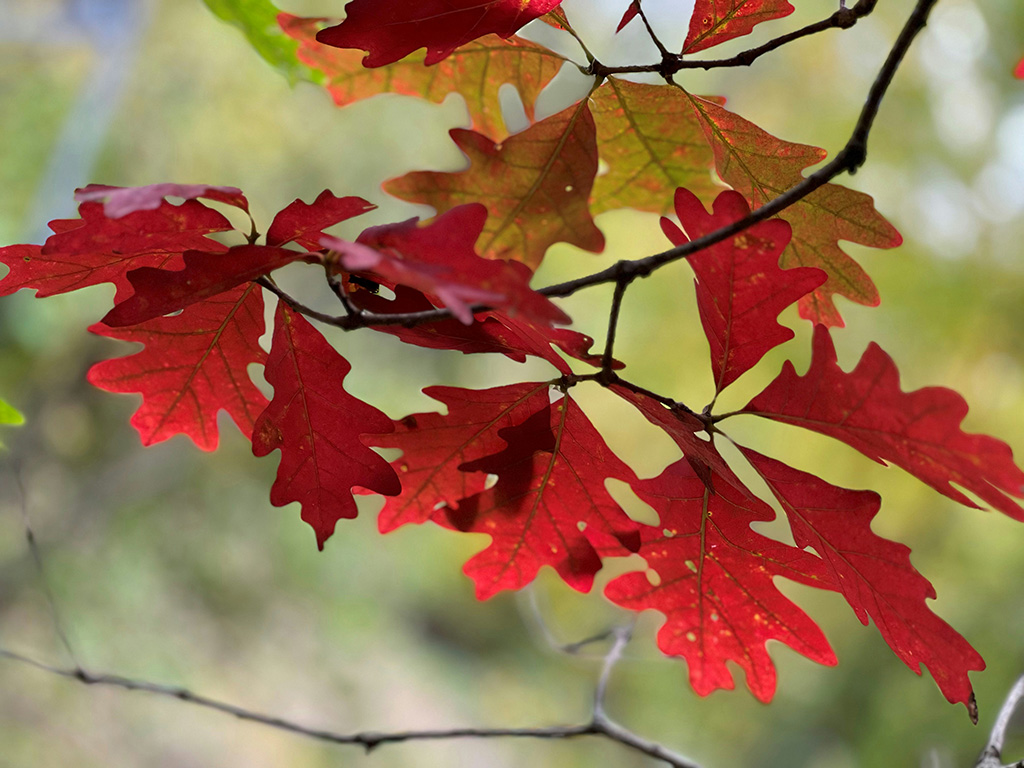
3. Chestnut Oak
While speaking of white oaks, we should say something about chestnut oaks (Quercus montana) as well, since they are part of the larger white oak family. It’s easy to identify chestnut oaks because of their distinctive “chunky” bark. These trees grow in many places, but especially along ridgelines, where the surrounding soil is rocky and full of boulders.
Unfortunately, in recent years, chestnut oaks have been dying in large numbers, though scientists have so far been unable to point to a specific cause.
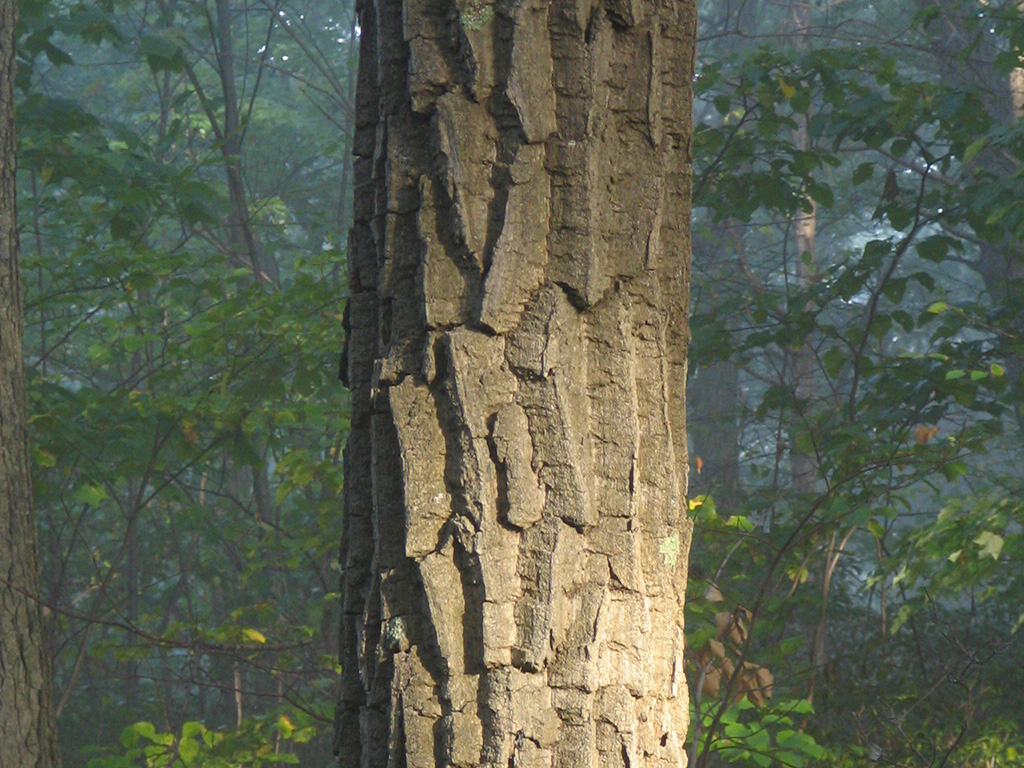
4. Yellow (Tulip) Poplar
Characteristics
Yellow Poplar trees, also known as tuliptrees or Liriodendron tulipifera, are notable for their impressive size and quick growth. They are primarily found in the eastern part of the United States, ranging from upstate New York to the Carolinas and southwest into Missouri. The trees often attain heights of 100 feet or more and can grow as wide as 8 feet or more. Their quick growth keeps them mostly free of lower branches—making them ideal for lumber. While many beloved species are plagued with insect and disease pests, poplars remain virtually immune. Their health and good lumber qualities set them to become the forest of the future.
Timber Value and Use
The wood from Yellow Poplar trees tends to be light and relatively soft. Once considered nearly a “junk” species compared to more popular trees, poplar is now valued above red oak. Its quick growth means it can be ready for the next harvest faster than other trees.
Poplar is being put to increasing use as trim, cabinet backs, and even caskets. During the Covid pandemic, when the price of 2x4s was high, some mills began producing them from poplar.
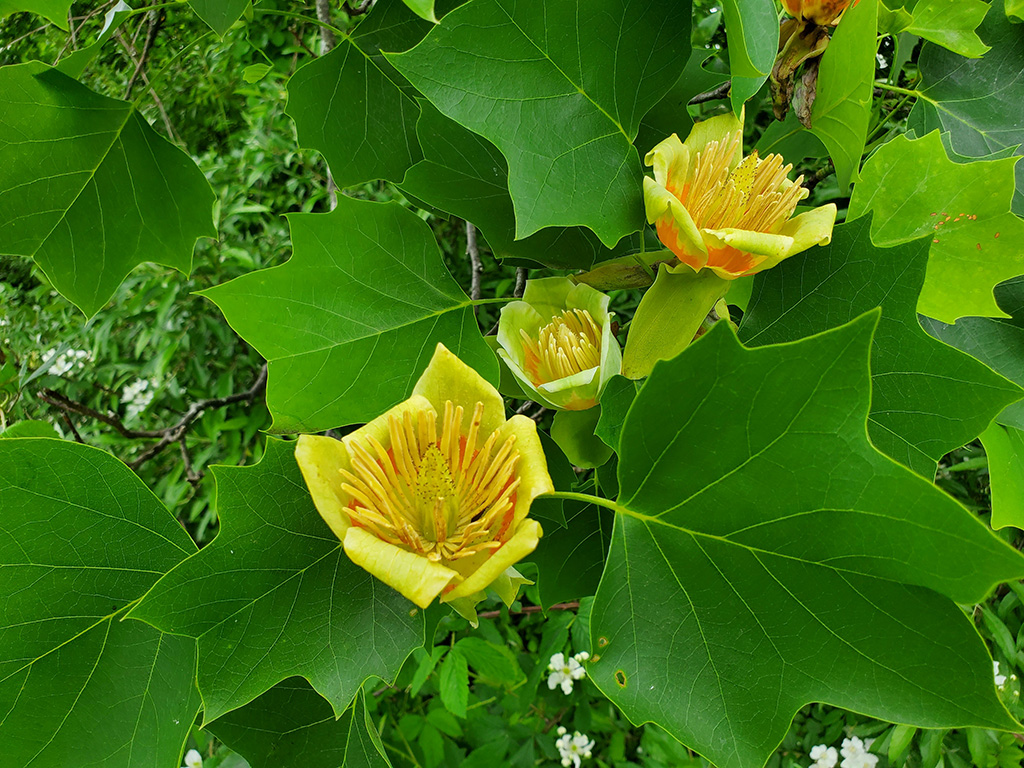
5. Red Oak
Characteristics
Red oak trees, scientifically known as Quercus rubra, are large hardwoods that often reach heights of more than 80 feet with trunk diameters of 3 feet and more. Spreading canopies of 40-60 feet make for a grand presence. They are known for their strength and fast growth rate, up to 24 inches per year in their first ten years. In optimal growing conditions, red oaks can reach over 100 feet tall. They also happen to be honored as our national tree.
Red oaks consist of both a species and a family. The oaks in this family have toothed leaves, unlike the lobed leaves of the white oak family. Besides the red oak species, the red oak family includes trees such as black oaks, scarlet oaks, and willow oaks. However, because the wood of these other trees is more brown than red, they are not used or valued like true red oaks.
Timber Value and Use
At one time, red oak was a high-paying tree. But as is so often the case, the value of certain trees rises and falls with home fashion trends. While it is still used in flooring and cabinetry, it’s no longer one of the favorites. It has also lost value because of tariff-induced reductions in exports. Trade policies with China have reduced exports for the past 5-6 years, which has kept demand lower.
The best red oak goes for flooring and trim, while the lesser grades go for pallets and railroad ties.
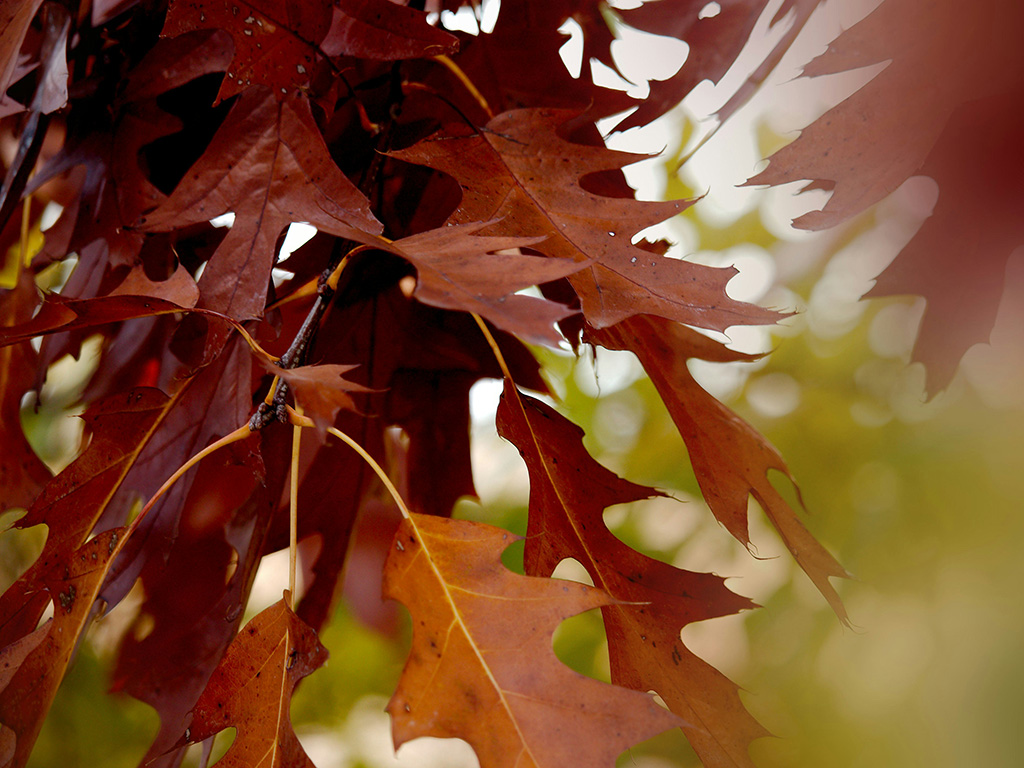
6. Hickory
Characteristics
Several species of hickory are common to our area—pignut, shagbark, mockernut—it’s quite a list! These trees are renowned for their strength and are recognized by their compound leaves, which turn a stunning gold in autumn.
Timber Value and Use
Hickory is a stiff, hard wood, popular in tool handles or wherever strength is needed. It’s used for furniture, cabinetry, and even flooring. (Our sawmill produces rustic hickory, a knotty wood that is a favorite for cabinets.) Though not high on the list of valuable trees, hickory still puts dollars in the bank. And what can’t be used for lumber makes good firewood. It’s also great for smoking meat.
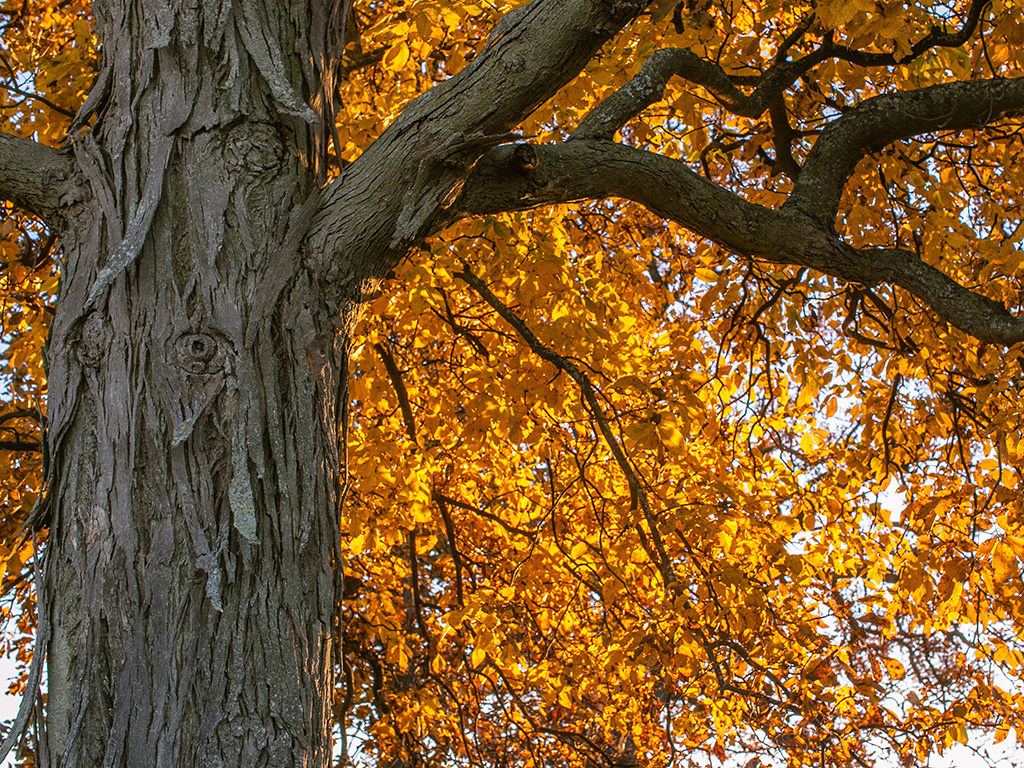
7. Red Maple
Characteristics
Red maples (Acer rubrum) are hardwoods found primarily within North America’s eastern and central regions. They are loved for their vibrant and distinctive fall colors, which range from a bright, crisp red to a brilliant yellow. With red buds and flowers in the spring and (in many cases) red leaves in the fall, these trees are well-named.
Timber Value and Use
While these trees are beautiful and make great lawn and street trees, they do not have the most value when it comes to lumber. The wood is grouped as a “soft maple” in contrast to a hard maple like sugar maple. The wood is used for cabinetry and has a value similar to that of hickory. The fruit, useful for foraging animals, falls in early spring and looks like a helicopter as it twirls to the ground.
Red maples have large, dense crowns, making it hard for smaller trees to grow beneath them. Because of this (and their lower value as timber), we selectively remove them to make room for better species like yellow poplar.
One unexpected trend is the popularity of “wormy maple,” red maple whose wood has been damaged by ambrosia beetles. This wood, which was once turned into pallets, is now bringing good sums.
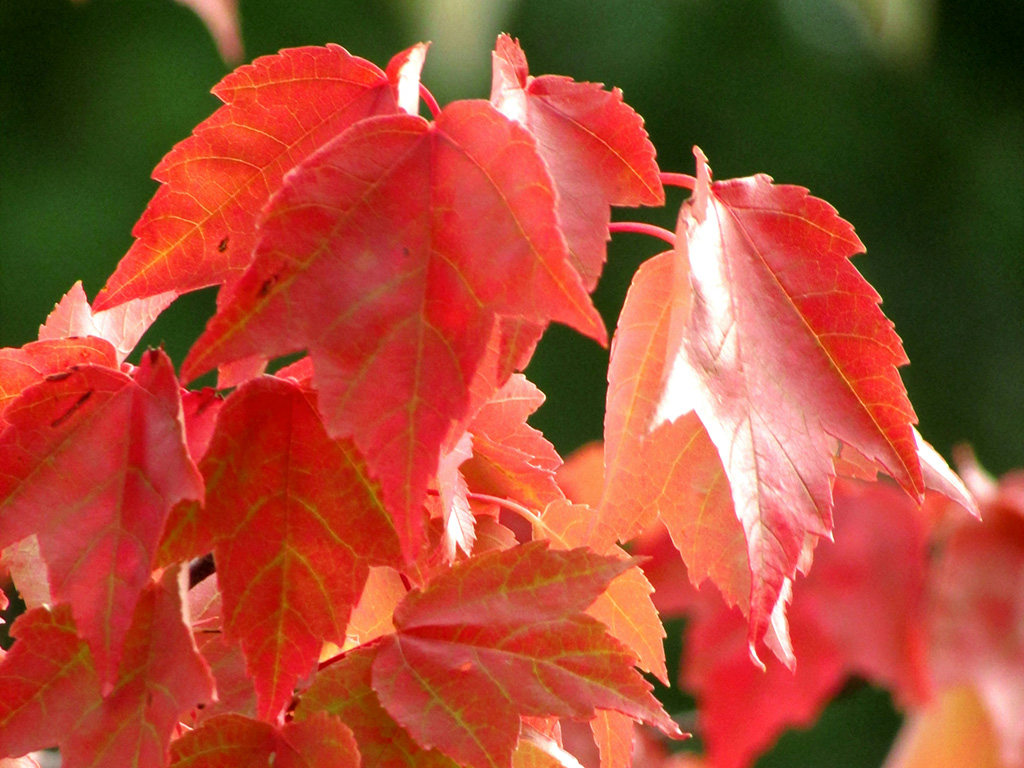
8. Black Birch
Characteristics
The birch family has many members, but in our area, the most common is black or sweet birch (Betula lenta). White birches, with their attractive peeling bark, grow best in more northern latitudes, but the birches in our area do not peel and have a nondescript gray color to their trunks. A distinguishing feature is their hanging flowers, called catkins.
Timber Value and Use
Sometimes, we can sell birch for veneer, but these trees are generally on the lower level of the timber value scale. We like to remove them when possible because they drop many seeds and can create tight groves, which limit the growth of more valuable trees.
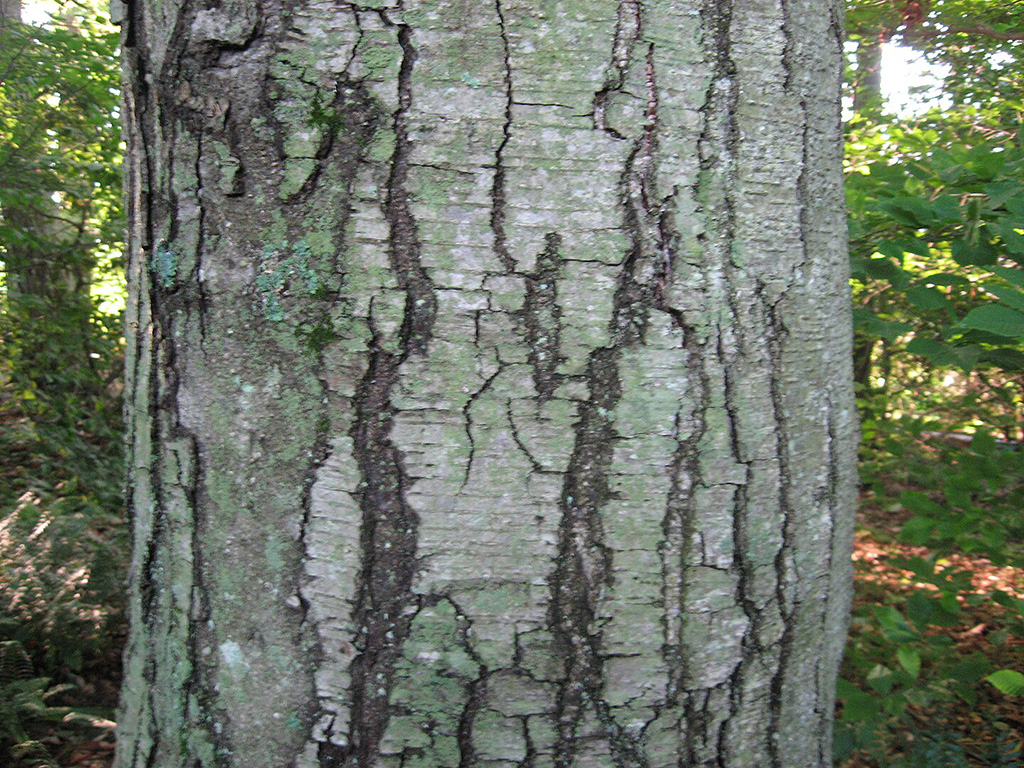
9. Sweet Gum
Characteristics
Sweet Gum Trees, scientifically classified as Liquidambar styraciflua, are native to the southeastern U.S., as well as southern Mexico and Central America. In our area, they are most common on the Eastern Shore of Maryland, where they are often found in large groupings.
Anyone with one of these trees in their yard will be familiar with the spiky “gum balls” that fall each year. Besides this tell-tale sign, the five points of a sweet gum leaf and the “wings” that grow on the side of twigs also help to identify these trees.
Timber Value and Use
Not highly prized as a timber tree, sweet gum has been finding use as crane mats and pallets. Surprisingly, these trees bring more money than beech trees do. As far as management goes, we like to remove these trees where possible to make room for other trees like yellow poplar.
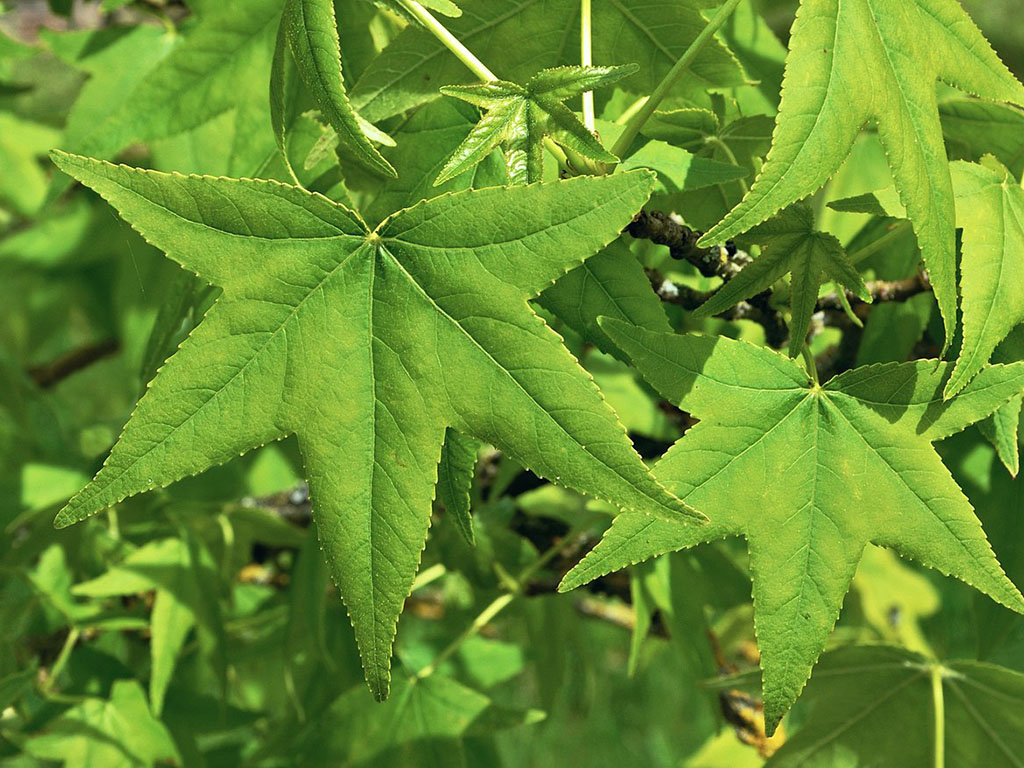
10. Beech
Characteristics
There are two main kinds of beech trees in our area—the European beech and the American beech. European beeches, however, are used in landscape settings and are not found natively in our woods. It is the American beech (Fagus grandifolia) that fills many forests in the region.
Beech trees often reach 80 feet in height, with trunk diameters of 3 feet and more. A unique feature of beech trees is the smooth, gray bark, which is often found with carved initials and other forest graffiti. While the nuts they produce are important for wildlife, beech trees are not very valuable for lumber.
Timber Value and Use
Despite being in the oak family, beech has never gained popularity as lumber. In years past, loggers would often leave beech trees, with the result that today, some woods are filled with them.
For good forest health, we aim to remove beech trees where it makes sense so that we can make room for more valuable species to grow.
Typically, beech is used to make large wooden mats and cribbing for mobile cranes. It sees some use in cabinets and could make good flooring, but it has yet to be used this way.
So, how did you do?
How many of these trees were familiar to you? Hopefully, after reading this article, you’ll be able to better appreciate your next walk in the woods.
If you’d like to learn more about your trees and if you have a valuable timber crop, please give us a call!